Ken Kozminski spends his days serving as president of a printing company that handles more than 600 titles for associations and commercial publishers. And while he’s a successful businessperson, his real passion is the outdoors.
Kozminski enjoys it so much that he bought 100 acres of land near Benton Harbor, Mich., that he’s established as wildlife habitat.
Working with guidelines set by the Michigan Department of Environmental Quality, he built a 3-bedroom vacation home elevated above a flood plain, planted 3,500 trees and shrubs on the property and established thriving food plots that attract deer, wild turkeys and other wildlife.
Pipestone Creek rushes by only steps away from the 2,354-square-foot home. “This is my stress release,” says Kozminski. “It’s a passion for me to see things grow and share what I’m learning with other folks.”
What’s also satisfying for Kozminski is having the right equipment to maintain his home away from home. An equipment dealer in Michigan played a major role in that by doing the little things right.
“I feel like I’ve got the perfect equipment for what I’m doing,” he says. “I don’t feel intimidated any longer.”
A Place to Relax
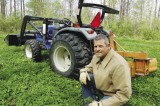
Ken Kozminski says it’s easy for equipment dealers who are good listeners to up-sell items to rural lifestylers. “People who are passionate about what they’re doing have a tendency to spend more money on the things they enjoy."
Kozminski lives, works and plays near St. Joseph and Benton Harbor, Mich., two small cities in far southwestern Michigan that border Lake Michigan and are also separated by the St. Joseph River. Situated in Berrien County, the area is often called “The Hamptons of the Midwest” because of its picturesque beaches, vineyards and vacation homes —which are popular with Chicago vacationers.
Kozminski moved to the St. Joseph area 24 years ago, working his way up at IPC Print Services from customer service rep to a manager of publication accounts.
He spent 16 months in the north of France serving as general manager of an IPC division with 100 employees, but he returned to St. Joseph in 1999 to take over as IPC’s president. He’s also chairman of Cornerstone Alliance, a regional economic development organization.
Meet the Rural Lifestyler:
Ken Kozminski
Occupation: President, IPC Print Services, St. Joseph, Mich.
Property: 100 acres in Sodus, Mich., with a 2,354-square-foot home.
Family: Wife Dayna, a human resources professional, and 2 children ages 5 and 7.
Equipment: 2004 Farmtrac DTC tractor (39 hp) with Farmtrac loader; Farmtrac 74-in. tiller; Farmtrac 6-ft. finishing mower; Farmtrac 4008 backhoe; Skibbe sprayer rebuilt with Kohler engine and 12-ft. FIMCO spraybar; Woods RB72 rear blade; 2 Stihl chain saws; two older, used Cultipackers.
Kozminski also spends spare time writing articles about his hunting adventures in Muley Crazy Magazine and Eastman’s Bowhunting Journal, and a feature about food plot construction is slated to run in Quality Whitetails magazine.
Kozminski bought his 100-acre tract in Sodus, Mich., in 2003 — a mix of food plots, woods, river bottom and cropland. The property, surrounded by farms and large single-family homes, used to be a religious retreat.
“I love wildlife habitat and management,” Kozminski said on a recent morning after spending 2 hours turkey hunting. “When I bought the property, the purpose was to put it into a family trust and establish it as a place for wildlife.”
Kozminski rents 35 acres to a young farmer, Dave Demski, who’s just getting started as a corn and soybeans farmer. On 7 acres of his property, Kozminski plants switch grass to provide cover for wildlife. He’s experimenting with different varieties to see what works best.
On 9 acres, Kozminski plants and manages 12 different foot plots mixed with corn, soybeans, alfalfa and clover. He’s growing more than 20 different varieties of clover and 10 varieties of alfalfa. “Some of it is more frost-tolerant, or it blooms early. I found that with a mixture of varieties I don’t have the disease issues. If one variety gets hit with something, something else survives,” he says.
Once the soybeans are hit with frost in the fall, he broadcasts winter wheat on some of the food plots, and in the spring he tills the wheat up for green manure and comes back with corn or soybeans.
Kozminski’s ultimate goal is to develop his property into a sanctuary that would help the deer, turkeys and other animals get to a maximum age level. “There’s so much hunting pressure in our area that it’s difficult to accomplish that,” he says.
Starting from Scratch
Save for the knowledge of horticulture he picked up working at a Michigan nursery, Kozminski had no farming experience when he bought the property.
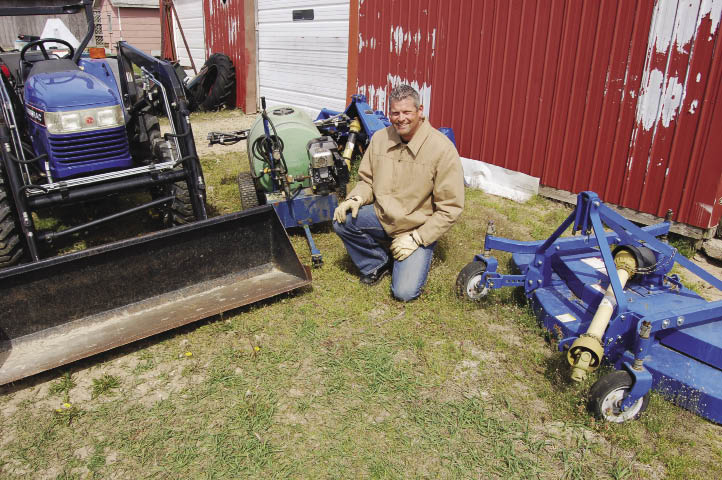
The Farmtrac tractor, Skibbe sprayer and Farmtrac tiller and finishing mower are a perfect match for Ken Kozminski because they’re durable and compact enough to navigate narrow pathways and be easily hauled from one food plot to the next.
He got started by using a walk-behind tiller and garden mower to do the initial food-plotting work, and his neighbors would help with some of the tillage. But he realized he needed something more. “I just couldn’t get anything done. I couldn’t get any momentum behind it.”
Kozminski turned to the Internet to do his preliminary research, spending many hours on the Michigan Sportsman.com forum, a place where hunters and outdoor enthusiasts with similar interests discuss property management, hunting activities and the equipment they use.
Some manufacturers have obviously caught on to forums like this: Exmark and John Deere have advertised on the site. “We get into discussions on how rocky the field is, or should I buy a disc or a tiller, how large the rocks are that you’re tilling through, or how wide the pathways are where you’re establishing food plots,” Kozminski says of the forum. “I solicited information from those folks on what types of equipment to look at.”
The most important criteria Kozminski had for equipment was “reliability — first and foremost. I wanted a model that was very easy to maintain, both due to time constraints and my lack of mechanical ability.”
Size was another factor. He needed a tractor with enough horsepower to perform his tasks and still maneuver through tight spaces in between food plots.
After getting suggestions about equipment brands and setups from friends on the hunting forum, Kozminski started shopping for a good deal. He turned to eBay and found a 39-horsepower 2004 Farmtrac DTC tractor for sale at a dealership. He picked it because it was small enough to navigate the narrow pathways on his property, but it still had plenty of power.
The assets of now-defunct Farmtrac were sold in late 2008 to Montana Tractors.
Opening a New Door
In February 2008, Kozminski drove to Paul’s Tractor Sales in Clio, Mich., about 3 hours away, to purchase the tractor and other equipment. He didn’t know what to expect and admits to being a little nervous.
“I had no experience driving a tractor. It was overwhelming looking at all the buttons and levers. And I had no idea before buying this property what a 3-point hitch was.”
But Kozminski says his experience couldn’t have been better at Paul’s, which today lists McCormick as its main tractor brand, along with Gravely zero-turn mowers.
Kozminski says the dealership’s owner, Paul Bolanowski, spent 5 hours with him that day making sure his new customer wouldn’t feel overwhelmed.
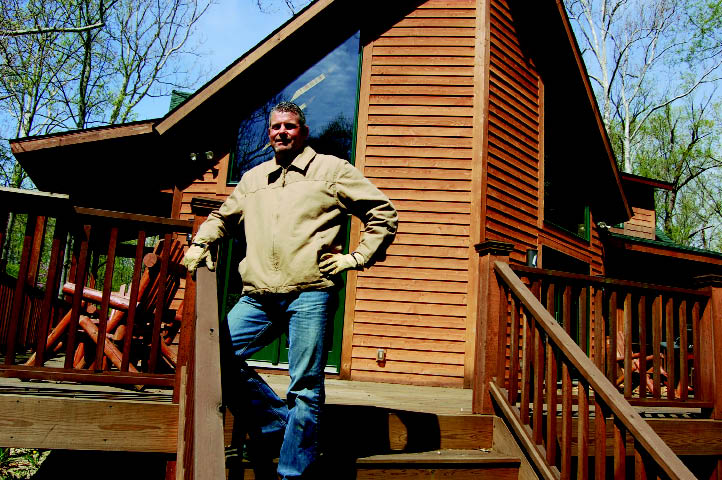
Ken Kozminski's passion is the outdoors — so much so that he bought 100 acres of land near Benton Harbor, Mich., that he’s established as wildlife habitat and the location for his 2,354-square-foot vacation home.
They started off with the tractor’s basic operations and features. Then they hooked up the mower to the tractor and did a test drive, and discussed the proper operation and adjustment of the tiller.
Kozminski spent about $20,000 for a package of Farmtrac equipment that included a Farmtrac tractor and loader, 74-inch tiller, 6-foot finishing mower and a backhoe. All of it was delivered on a trailer from Clio to Kozminski’s property. But the relationship didn’t end there. The help Kozminski got afterward from Bolanowski left a big impression.
“There are a lot of simple things you don’t pick up on right away, so I found myself picking up the phone and calling them back and asking things like, ‘How do you get the blade to drop quicker?’ Or how to set the tiller depth, or how deep to plant? Or how do I approach the field and get a smooth flow so I’m not making turns all the time?”
During a recent winter, Bolanowski helped Kozminski find a way around a malfunctioning heating element on the tractor so he could start the machine and clear his driveway of snow.
“It was very easy for me to just pick up the phone and call him after the fact, and he knew the equipment so well he could just tell me over the phone. They were short conversations because my dealer knew the answers.”
Kozminski also shared how good listening skills on Bolanowski’s part resulted in an extra sale. Kozminski mentioned that he wanted to build ponds on his property, and Bolanowski pointed him to a mini backhoe that was available.
“He didn’t know about that until I told him, but once he understood what I was doing he made the recommendation,” Kozminski says. “People like me do this for fun and enjoyment. It’s not like we’re doing this for a living. And people who are passionate about what they’re doing have a tendency to spend more money than the normal person on the things they enjoy.
“It’s easy to up-sell us into other things because this is what we enjoy doing. We all have too much hunting and fishing gear, and if you’re a golfer, you probably have way too much golfing equipment. It was pretty easy for them to help me with the backhoe.”
A Tool for Every Job
Weed pressure is a major issue on Kozminski’s property. Autumn olive is particularly troublesome, and the finishing mower is useful for keeping the weeds in check.
“Because I’m managing small plots focused on wildlife, the crops are very healthy and they take a lot of maintenance. I find myself mowing clover and alfalfa plots 5-7 times every season just to keep it cut back.”
Kozminski’s Woods RB72 rear blade comes in handy for grading the driveway and pathways on the property.
Another job is managing the tree population in a way that provides habitat for the wildlife. Kozminski has two Stihl chain saws for that purpose. He also owns a 40-gallon Skibbe sprayer that he retrofitted with a Kohler engine and 12-foot FIMCO spray bar that he uses to spray Roundup herbicide on his property.
He says the tiller is the most important tool to managing food plots because of the work it does to prepare the soil for planting.
“This often means creating entirely new plots out of old farm fields by spraying, then tilling the ground to prepare for liming, fertilizing and planting,” he says. “I use the tiller to prepare the soil after spraying and mixing in lime to increase the pH for planting. And after broadcasting seed I use the tiller to lightly bury the seed.
“It does everything from clearing land to mixing in nutrients to planting the seed, and then we start all over again the following season.”
Kozminski is not putting large amounts of hours on his equipment. It totals about 85 hours annually between the tiller, mower and sprayer, with 100 hours a year going on the tractor.
When he needs service, he buys parts from Tom Smith Tractor & Tire Center in nearby Watervliet, Mich. Much of his repair work is done with the help of his neighbor, Chuck Edwards, who farms 70 acres and shares equipment with Kozminski.
Customers Surfing the ’Net
One piece of equipment Kozminski doesn’t yet own is a food plot seeder or spreader, both popular items for hunters and outdoor enthusiasts creating wildlife habitat.
He currently applies all his fertilizer — mostly pelletized lime — by hand, which is time-consuming. He would like to get more done in one pass.
“I’d love to have a 3-point-mounted spreader at a minimum, and maybe a small seed drill. It would be ideal if I could put 300 pounds of fertilizer in it, which would be enough for what I must do on a single trip.” He also sees a possible investment in an estate rake.
When it’s time for Kozminski to buy more equipment, he’ll probably turn to the Internet again. That would be good news for rural lifestyle dealerships that have a useful, up-to-date web sites, but Kozminski feels that’s an area where many dealers fall short.
“Their web sites could be more developed, and become more of an information source for beginners by posting or linking to articles on how to get started, what equipment to look for, and what kind of questions to ask when getting into food plotting,” Kozminski says. “A lot of the information we’re getting off of Michigan Sportsman.com could be information that you get directly from the dealers.
“It’s all about content marketing. It’s not just about marketing products, but establishing yourself as a resource or knowledge base people can rely on. When they’re making a buying decision, they’re going to come to you because you’ve been providing that information all along.”
Kozminski provided an example. “I could see an article on a dealer’s web site talking about the elements needed to get into the food plot world, what equipment works best in what situation, what size tractor to look for and what types of implements should go along with it.
“Farmers just go to a dealer where they have a relationship. But for somebody like me who’s new to farming, the first source I’m using is the Internet. If a dealership is offering information to help me get started, I’ll look at them as a knowledge base, and that’s where I would go to buy.”
More About the Food Plot World
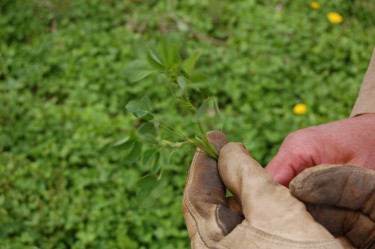
Food plot seeders are becoming hot items at dealerships that cater to hunters and outdoorsman, and those trends will likely continue, says Ken Kozminski, who tends to several acres of food plots on his property in southwestern Michigan.
One driver is the adoption of more aggressive deer management laws in some states. The state of Michigan, for example, has banned baiting for deer in the Lower Peninsula after a case of chronic wasting disease was discovered. Conservation officials are also paying closer attention to deer management.
“They’re really focused on growing bigger deer and managing the population between the does and bucks,” Kozminski says. “To do that, you must have food sources available on land to provide an ecosystem for them. Because of that, you’ll see a huge upturn in the number of people who are establishing food plots for wildlife.”
Natural equipment sales for hunting enthusiasts are compact tractors, utility vehicles, small discs, chain saws, seed drills, small spreaders and sprayers. Mobility is the key because those who maintain food plots may have the equipment in trailers.
Kozminski noted that hunt clubs are buying up property in rural areas and establishing food plots and which need to be maintained as well. (See article on hunt clubs, p. 36.)
“It’s going to be a very rapidly growing industry,” he says of the food plot trade. “Many people out there are now doing it full-time, going from location to location and establishing food plots. A drawback of larger farm equipment is that in most places we plant there isn’t room to bring the equipment in.
“My tractor is perfect for what I’m doing. It’s got the frame of a 36-horsepower tractor with a 39-horsepower engine. It’s the ideal size.”

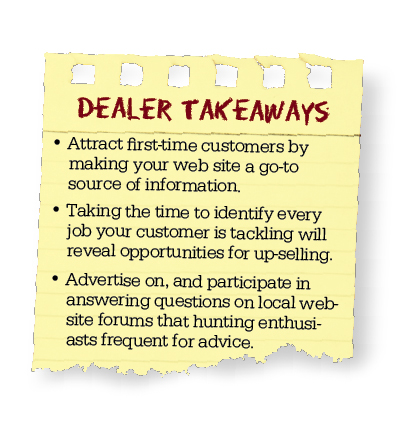
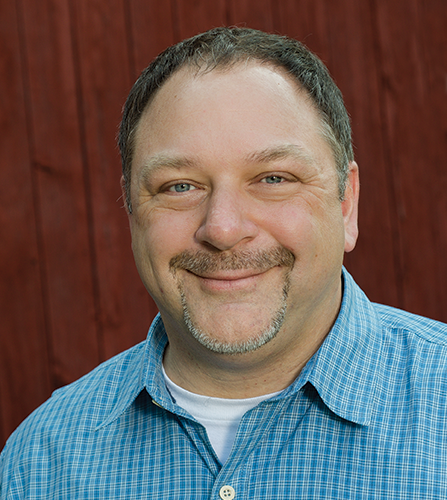



Post a comment
Report Abusive Comment